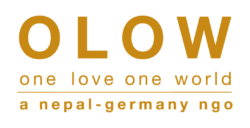Nepal is located in Asia and borders the People’s Republic of China in the north and India in the east and southwest.
Nepal as a landlocked country has no direct connection to the sea.
The agricultural sector is the most important industry in the country.
An estimated 77% of the population is dependent on agriculture and yield.
Farmers’ income is unsafe due to crop failures, lack of fields and fertile soils, erosions and other factors, or is often not enough to feed the entire family. Therefore, many farming families come to the cities hoping to make money.

